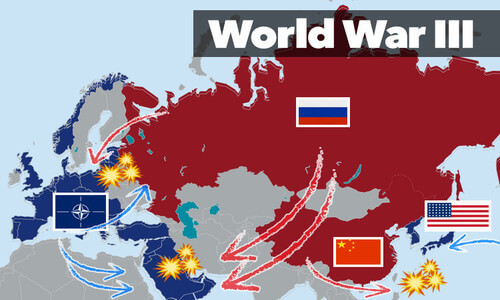Playback speed:
The U.S. Navy’s “doomsday plane,” the E-6B Mercury, has landed in Iceland to conduct operations in the U.S. European Command zone, according to a statement from the command on Tuesday.
The crew of the E-6B Mercury, assigned to U.S. Strategic Command’s Wing One, met with the U.S. Ambassador to Iceland and other diplomatic and military leaders during their visit, according to the command’s Twitter account.
“A @USNavy E-6B Mercury assigned to @US_STRATCOM Wing One arrived in #Iceland recently, while conducting operations in the USEUCOM area of responsibility,” U.S. European Command tweeted on Tuesday. “The crew met w/U.S. Ambassador to Iceland Carrin Patman & other diplomatic & military leaders.”
A @USNavy E-6B Mercury assigned to @US_STRATCOM Wing One arrived in #Iceland recently, while conducting operations in the USEUCOM area of responsibility. The crew met w/U.S. Ambassador to Iceland Carrin Patman & other diplomatic & military leaders. #WeAreNATO @usembreykjavik pic.twitter.com/CLYdl86kP4
— U.S. European Command (@US_EUCOM) February 28, 2023
The plane’s arrival comes shortly after Russian President Vladimir Putin signed into law Moscow’s suspension of the New START nuclear treaty.
The E-6B Mercury aircraft is designed to function as an airborne command post in the event of an all-out nuclear war, disaster, or another large-scale conflict.
The plane enables U.S. command to communicate with both strategic and non-strategic weapons systems, making it possible to launch ground and submarine-based ballistic missiles capable of carrying nuclear warheads, according to the Pentagon.
The plane’s arrival in Iceland is significant given the current geopolitical climate, with tensions between the U.S. and Russia on the rise.
The suspension of the New START nuclear treaty, which limits the number of nuclear warheads and missiles that each country can deploy, has further fueled concerns about the possibility of a nuclear conflict.
The E-6B Mercury’s deployment to Europe suggests that the U.S. is taking steps to ensure that it is prepared for any potential conflict.
The plane’s advanced communication capabilities make it a vital asset in the event of a nuclear war or another catastrophic scenario, as it would enable U.S. command to maintain control and coordination of its strategic and non-strategic weapons systems.




